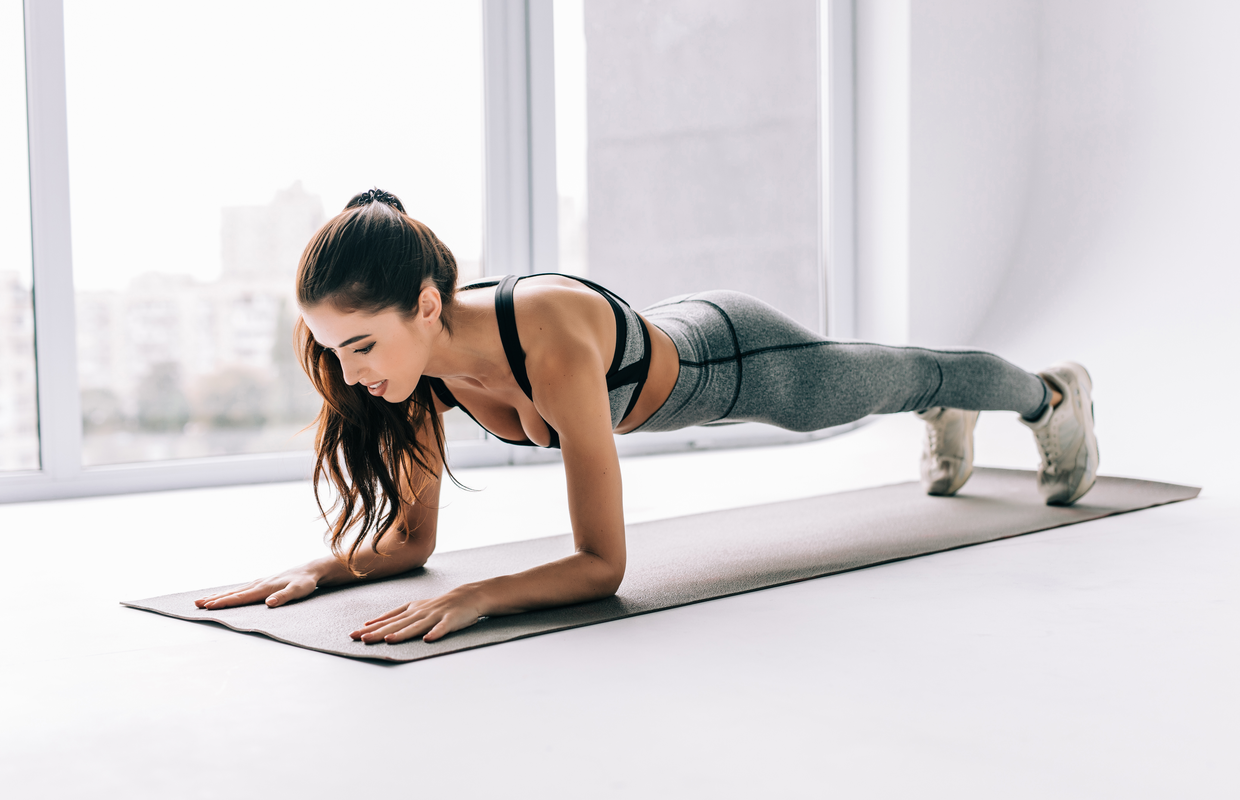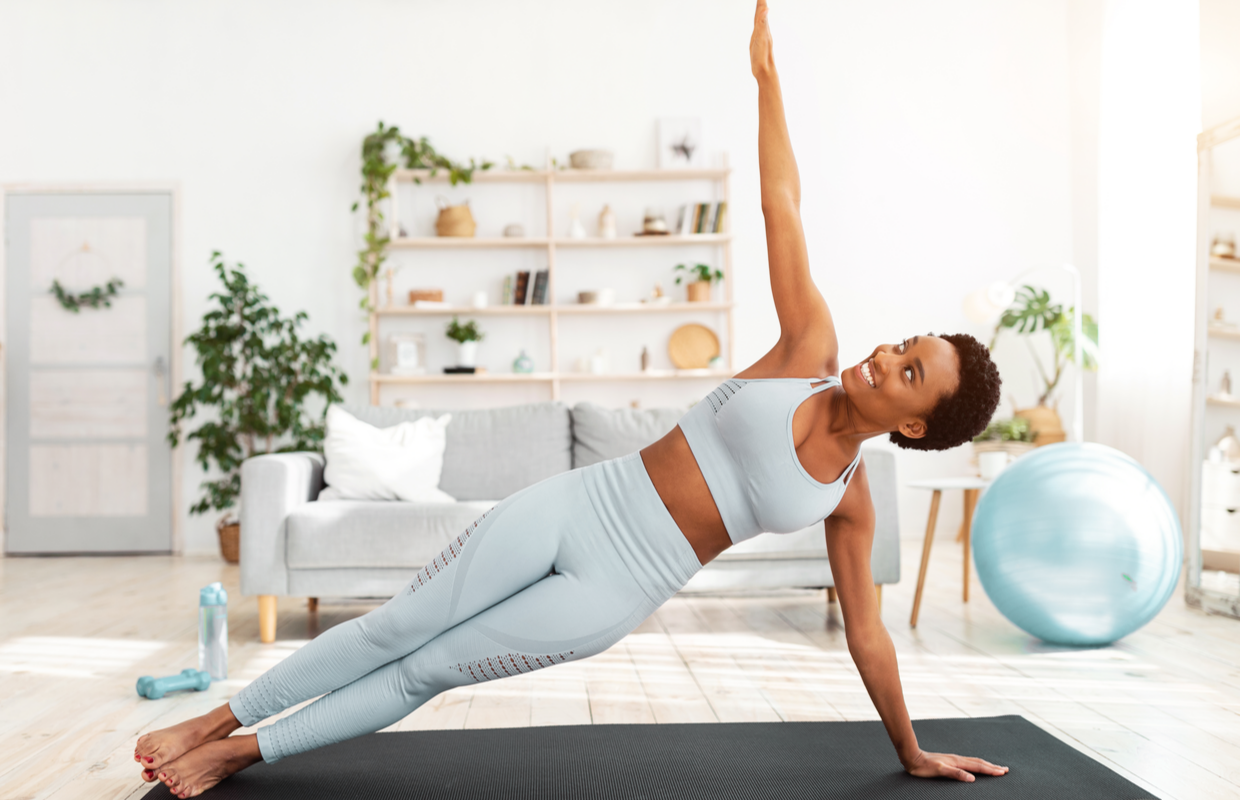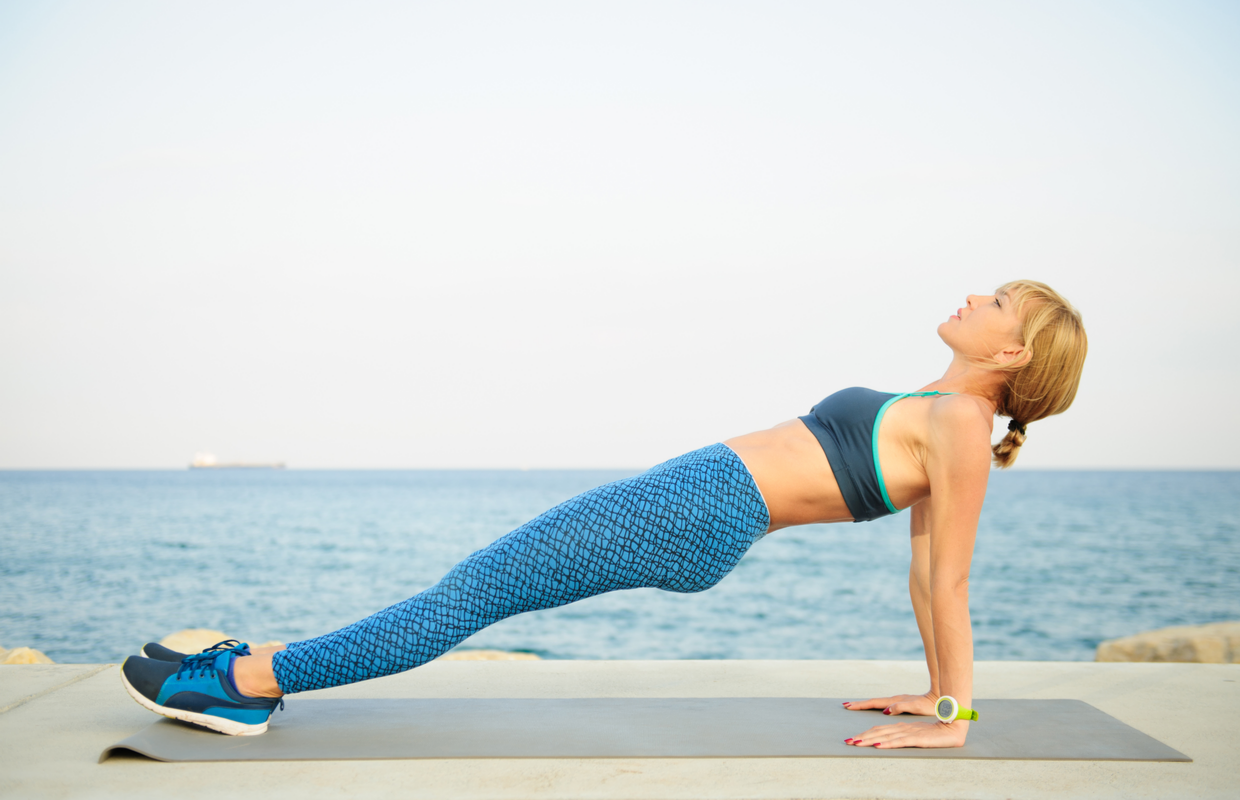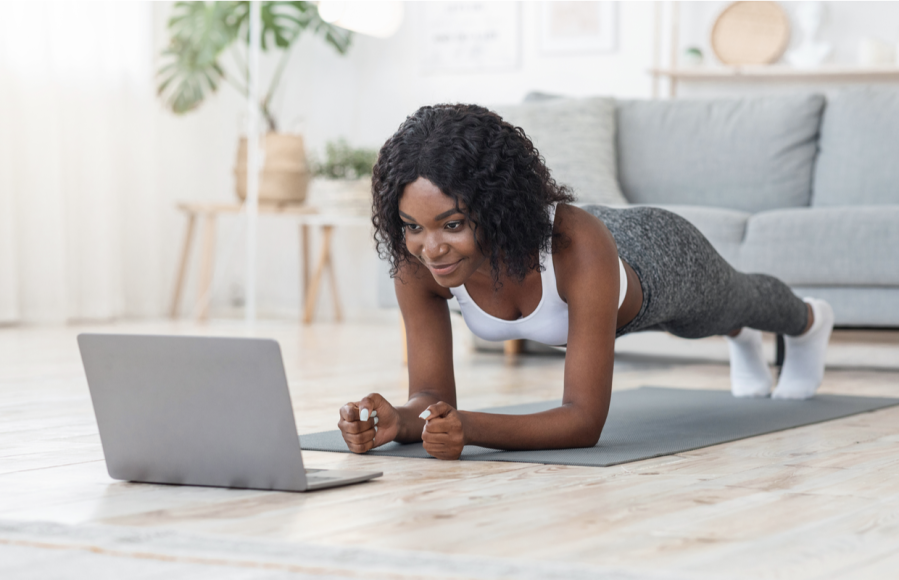Build your strength and fitness with classic body moves – no equipment required. Here, personal trainer Sam Edgar takes shares her technique tips to help you learn how to do a plank correctly…
Benefits of planking:
There are so many benefits from learning how to do a plank correctly – and then practicing frequently. The obvious ones are improved core strength, which makes performing everyday tasks easier, and increased back strength, which reduces back pain.
Performing a plank correctly and on a regular basis will also improve your entire posture and overall balance thanks to improved core strength. Like all exercise, planks are great mood boosters too – it gives you a real sense of achievement when you can hold your plank for longer than you could the week before!
What muscles does a plank work?
The plank works all your core muscles! This includes those ‘six pack’ muscles, rectus abdominis, deeper core muscles (transverse abdominis), internal and external obliques and muscles in your back running along your spine. The plank will also work on the muscles in your shoulders and arms while you hold the plank position.
Why is plank good for me?
In one single move you are improving the strength of your entire core, while engaging your shoulders, glutes and thighs to hold the perfect plank. It’s a classic for a reason!

How to plank correctly:
- Place your forearms parallel on the floor, with shoulders directly over elbows.
- With your legs out straight behind you, suck your belly button into your spine and elevate your torso and legs off the ground.
- There should be a lovely straight line from your head down to your toes.
Plank technique tips:
- Make sure you breathe when learning how to do a plank correctly! There is a tendency to hold your breath in the plank position, which will increase your blood pressure, so make sure you keep breathing.
- Keep your hips in a line with your back. A common mistake is to have your hips either too high or too low; this tends to happen when you get tired.
- Don’t drop your head and look back at your toes as this will put pressure on your back and neck. Keep your head straight.
- If the full plank is too much to begin with, drop down to your knees. You’ll find this position easier and as your strength improves you can progress to a full plank.
How long should I hold a plank for?
If you are new to learning how to do a plank correctly, hold for 15 seconds initially and aim to build up to 60 seconds. Repeat for three to five times and aim to perform this set three times a week. As you can perform the plank anywhere – even in front of your favourite TV show – this should be achievable.
Remember, it’s better to hold the plank for a shorter period of time maintaining the correct form, rather than holding it for longer and losing technique.

How to increase the difficulty of a plank
They are many variations of a plank, so you’ll never get bored! If you want to get more of a strength workout, you can also turn your plank into a dynamic exercise by moving between different variations.
When first learning how to do a plank correctly, many people find it easier to stay on their forearms. However, as your overall strength improves, try starting on your forearms, then come up to a high plank by straightening one arm at a time, holding for a few seconds with straight arms, then dropping back down onto your forearms and repeating.
You could also try a side plank (pictured above), where you stack your feet one on top of the other and hold yourself up on one arm, while the other extends above your head. Alternatively, you could get your triceps involved by trying a reverse plank (pictured below), where the front of your body faces the sky, rather than the ground.








